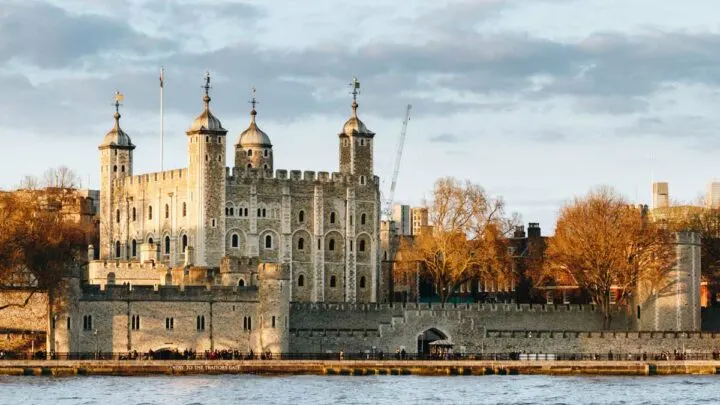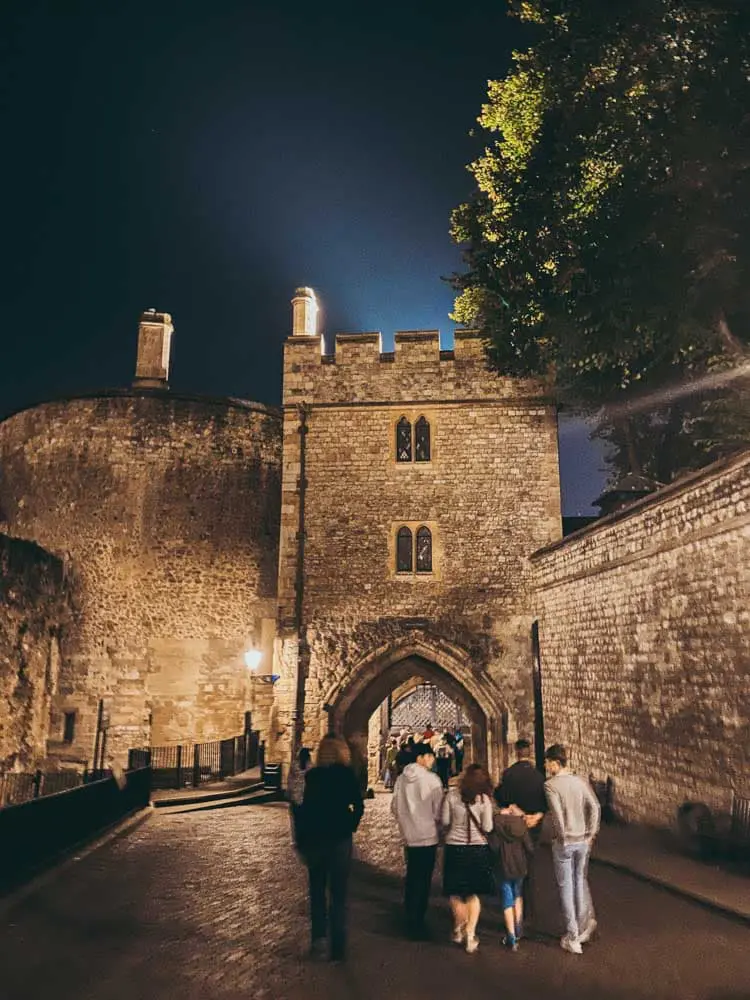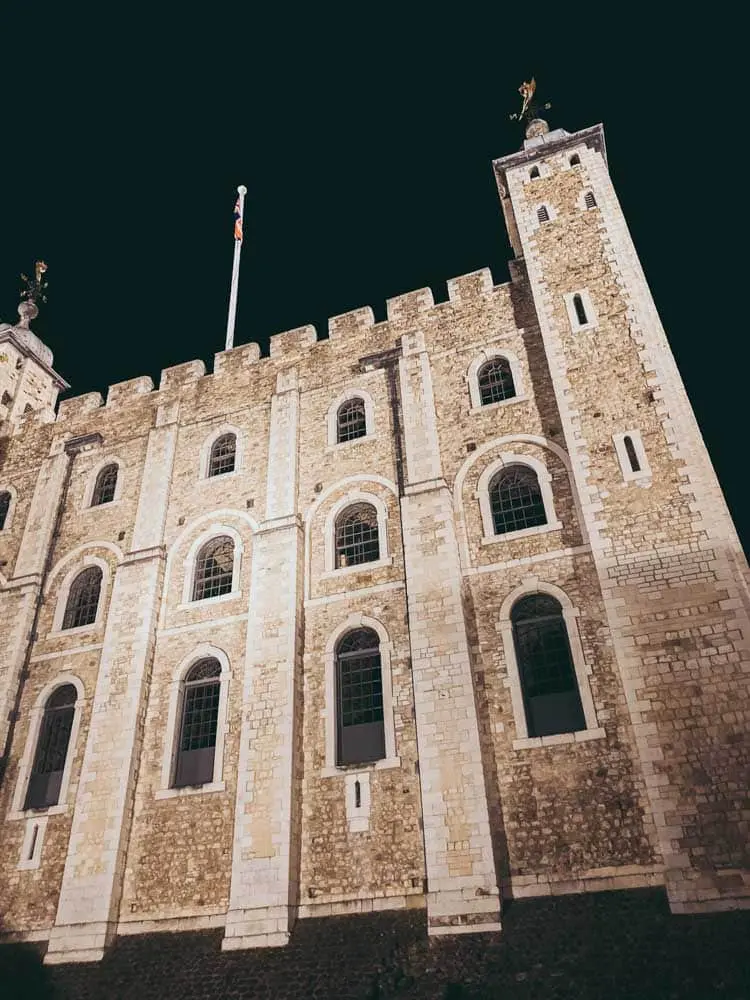Are you ready to discover a few curious facts about the Tower of London?
The Tower of London: one of the capital’s most famous buildings and a must-do on every London bucket list.
But what secrets lie within the Tower’s walls? We’re here to tell you all about London’s famous fortress – from the gruesome revelations of recent years to fascinating tidbits we bet you never knew. You’re welcome.
Read on for the most fascinating Tower of London facts you need to know before you visit…
Interesting Facts about the Tower of London
The Tower of London Is Not Its Official Name
First of all, let’s get things straight: the Tower of London may be the name we all know and love this landmark by, but the building’s official title is Her Majesty’s Royal Palace and Fortress of the Tower of London.
Very fancy. Bit of a mouthful, though.
The Tower of London Has Ravens That Cannot Leave
The ravens that reside at the Tower of London are famed for being the guardians of the Tower – we like to think of them as always ready to spring into action, Avengers-style.
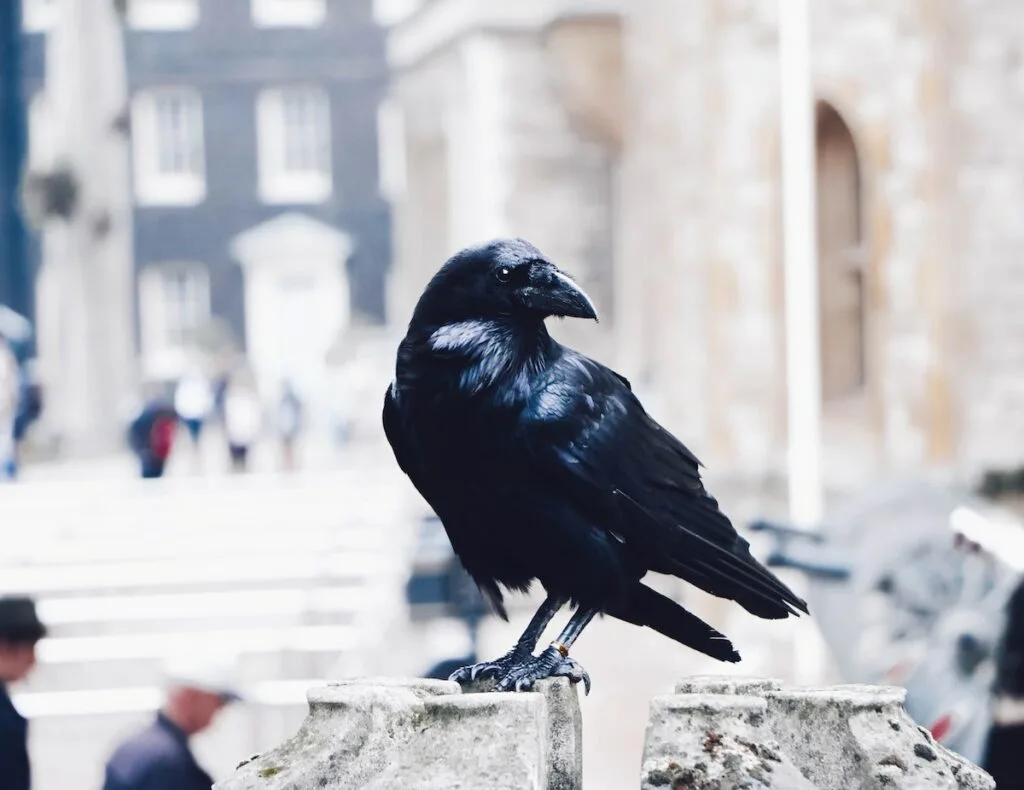
They lodge on the South Lawn and their fun personalities can be seen when you visit the Tower – they love to mimic sounds and play games amongst each other. Try to spot them when you visit.
The current ravens have even been given adorable names: Jubilee, Harris, Gripp, Rocky, Erin, Poppy, and Georgie.
That’s all very well, but what happens if the ravens fly away, we hear you ask?
It’s all a little bit ominous – Charles II is widely believed to have been the first Royal to insist that the ravens must stay put.
If the tower is ever abandoned by its resident ravens, it’s said that the Kingdom and the Tower of London will fall. Not ideal – let’s pray they stay there, then.
The Ceremony of The Keys is One of The Oldest Military Rituals Remaining
We’ve already written a complete guide to attending the Ceremony of the Keys here, but the historic tradition of locking up the gates at the Tower has taken place every single day in London for over 700 years.
That’s right – throughout both World Wars, while the devastating fire roared on, and even whilst the Plague was wreaking havoc on Londoners. Those Yeoman Warders (a.k.a Beefeaters) really take serving the Queen and country seriously.
During the ceremony, the chief Yeoman Warder brings a lantern in one hand and the Queen’s Keys in the other – other guards wait in the archway of the bloody tower before the spectacle begins. It’s truly a sight to behold.
The Crown Jewels Are Kept at The Tower of London…
Despite many people thinking that they are replicas, Royal Coronation apparel – or the ‘Crown Jewels’ – have been locked away in the Tower of London ever since the 1600s.
Crowns, robes, and jewellery are amongst the memorabilia that has been held at the Tower, and when a new King or Queen is crowned, the items are carefully guarded and sent to Westminster Abbey for the Coronation.
It’s estimated that over 30 million people have visited the Tower of London to view the Crown Jewels – making them one of the most-viewed objects in the UK.
…And Contain 23,578 Gemstones
All’s well and good, but we want to know more about the bling. Boasting over 20 thousand sparkling stones, the official cost of the Crown Jewels is: zero.
That’s right, they’ve never been valued (and they’re not insured either, surprisingly) – though estimates report that they cost between 2 – 4 billion pounds.
The Tower Is Said to Be Very Haunted
If you’re looking for haunted facts about the Tower of London, you’ve come to the right place.
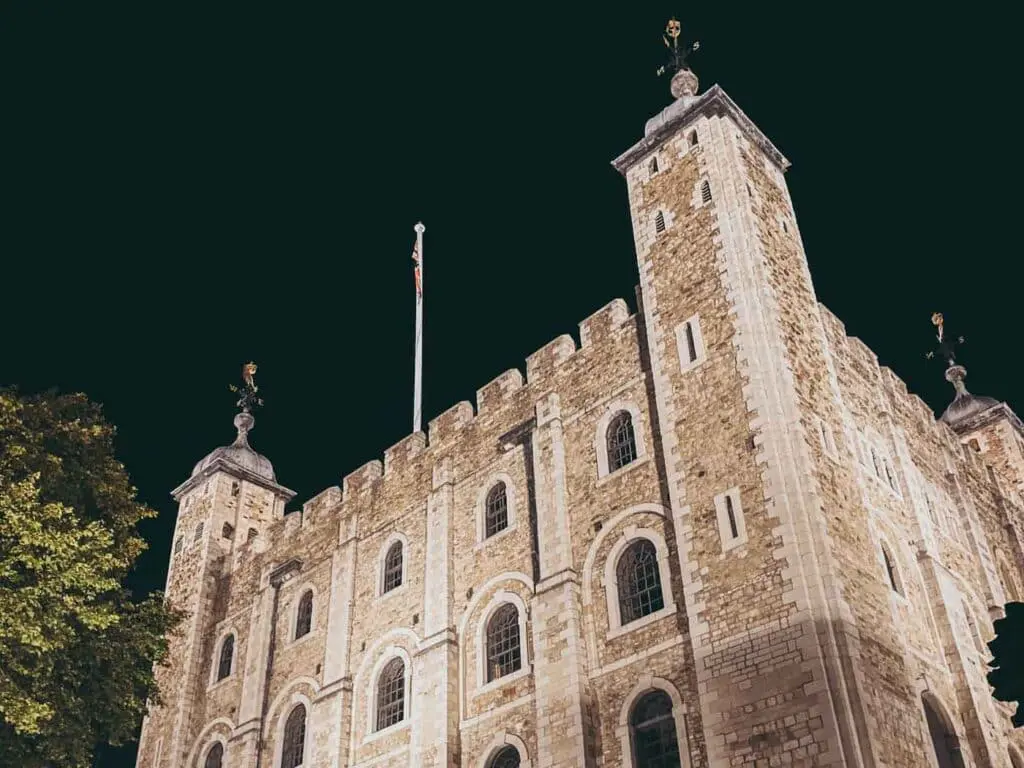
Plenty of famous faces are said to haunt the walls of the Tower – and chillingly, there’s even a bear that is rumoured to appear, scaring visitors to death.
Arbella Stuart (the cousin of Elizabeth I) starved to death in the fortress’ walls and is said to still haunt the Queen’s House, whereas Anne Boleyn is reported to pop up near Tower Green, which was the site of her execution in 1536.
As well as Henry VIII’s famous lover, two small boys are said to haunt the tower.
The ‘Princes in the Tower’ refer to King Edward V and Richard of Shrewsbury, who were locked in the Tower after the death of their father. The boys were believed to have been murdered way back in 1483 – though their remains were only discovered 200 years later.
It’s safe to say that you’ll need to keep your wits about you when you visit the Tower.
The Tower of London Was London’s First Zoo
The ravens aren’t the only animals that have had the pleasure of residing at the Tower of London. Between 1200s to 1835, the Tower was home to a menagerie of wild and exotic animals, and most were given as Royal gifts to the Kings and Queens that reigned.
It all began in 1235, when Henry III was gifted three Leopards (realistically, it’s far more likely that the creatures were actually lions, but we digress) and he decided to start a zoo. A polar bear was acquired in 1252 and then an African elephant joined the clan in 1255.
As you wander around the Tower’s grounds, you’ll notice sculptures of lions and other animals, paying homage to the four-legged friends that have previously lived here.
Despite Holding Famous Prisoners, The Tower Was Never Supposed to Be a Prison
Built to primarily act as a secure fortress and showcase royal power, it was never intended that the Tower of London would be a place for incarceration.
It didn’t take long, however, for the Tower to be used to hold some of the country’s most notorious prisoners – particularly, those who posed a threat to the Royals or the country. By the Tudor era, the tower was famed for being the most high-security and brutal prison in the country.
Guy Fawkes, Anne Boleyn, and even Queen Elizabeth I were all imprisoned at Her Maj’s fortress.
More recently, infamous gangsters the Kray Twins were locked up at the Tower. Though not for their murders or robberies. Oh no, the Krays were held because they punched a corporal after being called up to serve with the Royal Fusiliers.
An Escapee Once Used Invisible Ink to Flee the Tower of London
One of the most interesting facts about the Tower of London is the case of John Gerard. Gerard was arrested in 1594 – his crime? He was a Catholic Priest in a Protestant country.
Not only was he incarcerated, but he was subjected to an abundance of inhumane torture during his sentence – so much so that he came up with a cunning plan to flee the Tower.
As part of his escape plan, Gerard used orange juice as invisible ink to write secret messages to those who would help him get out. Eventually, he was successful in abseiling down the side of the Tower of London and managed to reach Uxbridge, where he continued his priestly duties.
The Keys to the Tower Were Stolen Recently
In 2012, the staff were shaken when an intruder broke into the Tower of London and nabbed a set of keys.
Luckily, the keys weren’t for anything too important – only keys to the restaurant, conference rooms, and an internal lock to the drawbridges were stolen. Beefeaters swiftly changed the locks and avoided any unwanted visitors. Phew.
The Tower Was an Important Base During Both Wars…
When it comes to the bloody Tower of London facts, perhaps the most important was the fortress’ role in both the World Wars, during which the Tower transformed into an impenetrable military base.
During WWI, the Tower moat was the training ground for new recruits, including those who were set to join the Royal Fusiliers Regiment – and, interestingly enough, their headquarters are still at the Tower today.
During WWII, the Tower held the famous Nazi prisoner of war Rudolf Hess – who was captured after crash landing in London during a flight to Scotland. 12 spies were also executed here.
… But Was Heavily Bombed During WWII
During World War I, the Tower went largely unscathed by bombs – a very lucky feat. However, the Tower wasn’t so lucky the second time around.
In 1940, in the midst of World War II, the Tower of London was devastated by an air raid. One of the towers was bombed and completely collapsed, spilling rubble into the moat below it.
Luckily, the Tower was quickly restored and reopened to the public thereafter.
Skeletons Have Recently Been Found Underneath The Tower
As recently as 2019, two 500-year-old skeletons were discovered buried underneath the Tower of London. It’s believed that the skeletons were of an adult woman and a child, while the remains of a dog were also found nearby.
The Beefeaters and Their Families Live in The Tower of London
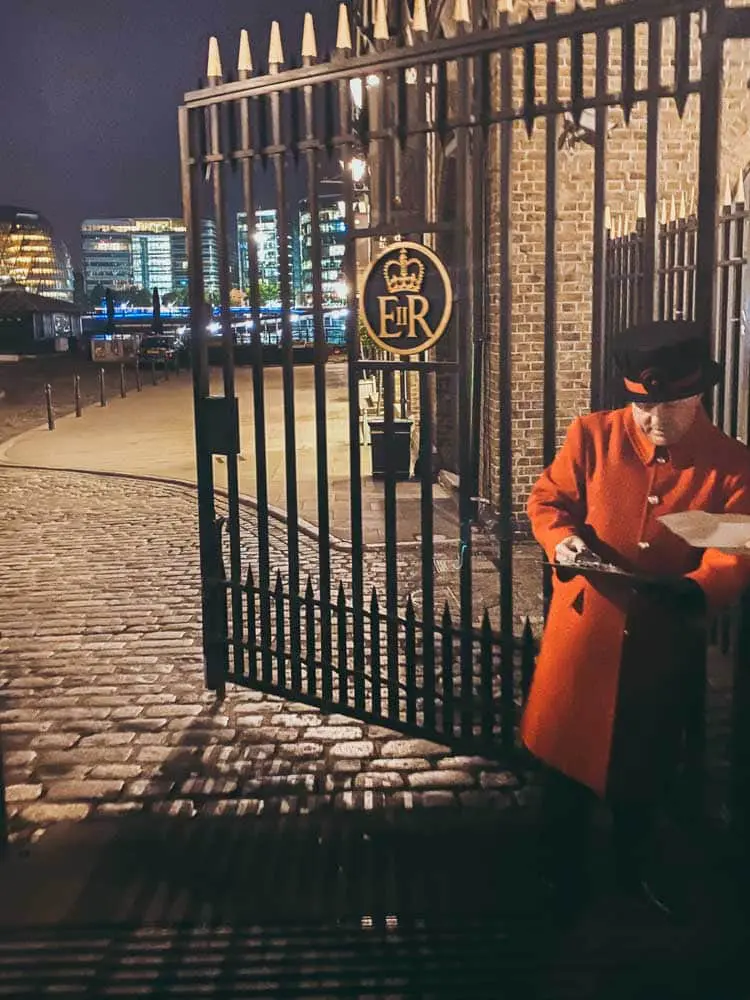
The Yeoman Warders have protected the Tower of London (and the Crown Jewels) for decades, and they are very carefully selected for the service they have previously undertaken in the armed forces.
In order to become a Beefeater, you must have completed 22 years in the army – and you must be prepared to uproot your family to go and live in the Tower.
Their uniform alone costs more than £7000 each thanks to the golden thread that decorates it – now just imagine spilling your morning coffee down that
The Tower of London Used to House the Royal Mint
For over 500 years, the Tower was home to England’s money mint – at first making each coin painstakingly by hand until technology advanced enough for a machine to be used to cut the gold instead.
The mint relocated in the 1800s, but it’s because of this Tower of London fact that the street nearby is named Mint Street.
The Tower of London Has a Secret Pub
Did you know that there’s a secret pub in the Tower? It’s called The Keys, and while it has got absolutely nothing on these historic London boozers, we think that’s pretty darn interesting.
While you won’t actually be able to sink pints here when you visit, we have it on good authority that the pub is adorned with red Beefeater logos and Royal symbols. In fact, each Yeoman Wardler has to take a two-week shift as a barman.
And yes, there’s plenty of Beefeater gin involved.
The fortress is somewhat self-sufficient, meaning it also has an on-site doctor, a church, and a village green.
The White Tower Is the Oldest (And Most Famous) Part of the Building
When you picture the Tower of London, we bet you instantly think about The White Tower – this is the oldest part of the Tower of London and the most iconic castle keep in the world.
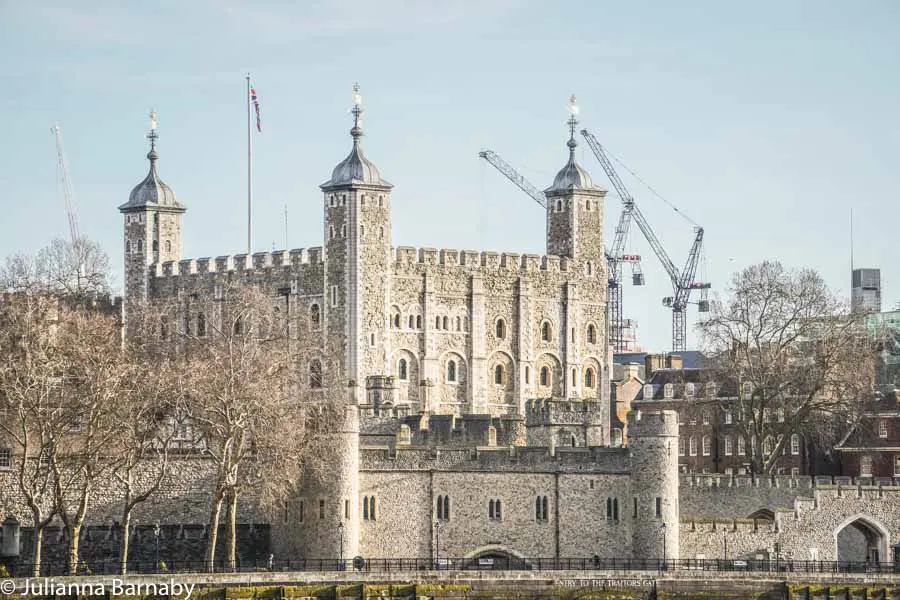
At the very top of the White Tower lies the original executioner’s block and axe, believed to have been used last in 1747. While the basement is thought to have been the torture chamber, where the likes of Guy Fawkes and John Gerard were taken.
There we have it, folks – 18 fascinating Tower of London facts. Go ahead and impress your friends with your newfound knowledge!
We recommend booking a tour if you want to learn more about the Tower’s grisly history – we love this one as it combines access with the Crown Jewels.

